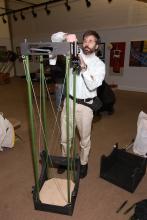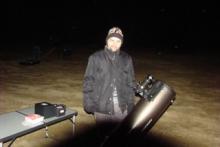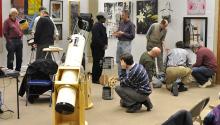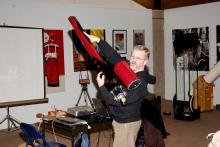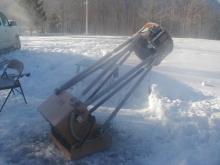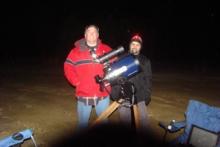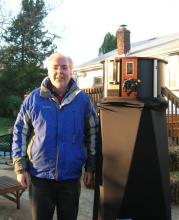Don't miss the meeting, coming up this week!
Feed aggregator
Astronomers produce most sensitive radio image ever of ancient star cluster
Astronomers have created the most sensitive radio image ever of a globular cluster, an ancient ball of tightly-packed stars.
Earth-sized planet discovered in 'our solar backyard'
Astronomers have discovered a planet closer and younger than any other Earth-sized world yet identified. It's a remarkably hot world whose proximity to our own planet and to a star like our sun mark it as a unique opportunity to study how planets evolve.
NASA scientists discover a novel galactic 'fossil'
Researchers at NASA's Goddard Space Flight Center have discovered X-ray activity that sheds light on the evolution of galaxies.
Close encounters of the supermassive black hole kind
Astrophysicists have confirmed the accuracy of an analytical model that can unlock key information about supermassive black holes and the stars they engulf.
Our surprising magnetic galaxy
A team of astronomers has created the first-ever map of magnetic field structures within a spiral arm of our Milky Way galaxy. Previous studies on galactic magnetic fields only gave a very general picture, but the new study reveals that magnetic fields in the spiral arms of our galaxy break away from this general picture significantly and are tilted away from the galactic average by a high degree. The findings suggest magnetic fields strongly impact star-forming regions which means they played a part in the creation of our own solar system.
Surprise gamma-ray feature beyond our galaxy
Astronomers analyzing 13 years of data from NASA's Fermi Gamma-ray Space Telescope have found an unexpected and as yet unexplained feature outside of our galaxy.
Astronomers make rare exoplanet discovery, and a giant leap in detecting Earth-like bodies
Astronomers have made the rare discovery of a small, cold exoplanet and its massive outer companion -- shedding light on the formation of planets like Earth.
Potential solvents identified for building on moon and Mars
Researchers have taken the first steps toward finding liquid solvents that may someday help extract critical building materials from lunar and Martian-rock dust, an important piece in making long-term space travel possible. Using machine learning and computational modeling, researchers have found about half a dozen good candidates for solvents that can extract materials on the moon and Mars usable in 3D printing. The powerful solvents, called ionic liquids, are salts that are in a liquid state.
NASA's Webb discovers dusty 'cat's tail' in Beta Pictoris System
Beta Pictoris, a young planetary system located just 63 light-years away, continues to intrigue scientists even after decades of in-depth study. It possesses the first dust disk imaged around another star -- a disk of debris produced by collisions between asteroids, comets, and planetesimals. Observations from NASA's Hubble Space Telescope revealed a second debris disk in this system, inclined with respect to the outer disk, which was seen first. Now, a team of astronomers using NASA's James Webb Space Telescope to image the Beta Pictoris system (Beta Pic) has discovered a new, previously unseen structure.
NASA's Webb finds signs of possible aurorae on isolated brown dwarf
Astronomers have found a brown dwarf (an object more massive than Jupiter but smaller than a star) with infrared emission from methane, likely due to energy in its upper atmosphere. This is an unexpected discovery because the brown dwarf, W1935, is cold and lacks a host star; therefore, there is no obvious source for the upper atmosphere energy. The team speculates that the methane emission may be due to processes generating aurorae.
Unlocking the secrets of a 'Hot Saturn' and its spotted star
A team of astronomers has unraveled the enigmatic atmosphere of the exoplanet HAT-P-18 b, shedding light on its intriguing blend of gases, clouds, and even the effects of its star's activity.
'Blob-like' home of farthest-known fast radio burst is collection of seven galaxies
In summer 2022, astronomers detected the most powerful and most distant fast radio burst (FRB) ever observed. Now, astronomers have pinpointed the extraordinary object's birthplace -- and it's rather curious, indeed. Using images from NASA's Hubble Space Telescope, the researchers traced the FRB back to not one galaxy but a group of at least seven galaxies.
Meteorite analysis shows Earth's building blocks contained water
Analysis of iron meteorites from the earliest years of the solar system indicate that the planetary 'seeds' that ultimately formed Earth contained water.









